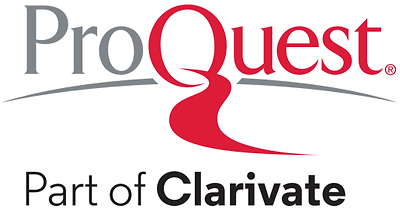Sol-gel Synthesis and Structural Properties of Cu Doped ZnO Nanoparticles
| Authors | P.K. Samanta1, M. Das2, N.K. Rana3 |
| Affiliations |
1Department of Physics (PG & UG), Prabhat Kumar College, Contai-721404, West Bengal, India 2Department of Physics (PG & UG), Panskura Banamali College, Panskura-721152, West Bengal, India 3Department of Physics, Ghatal R. S. Mahavidyalaya, Ghatal-721212, West Bengal, India |
| Е-mail | pijush.samanta@gmail.com |
| Issue | Volume 11, Year 2019, Number 1 |
| Dates | Received 18 November 2018; revised manuscript received 02 February 2019; published online 25 February 2019 |
| Citation | P.K. Samanta, M. Das, N.K. Rana, J. Nano- Electron. Phys. 11 No 1, 01028 (2019) |
| DOI | https://doi.org/10.21272/jnep.11(1).01028 |
| PACS Number(s) | 78.67.Bf, 78.67.Rb, 87.64.-t |
| Keywords | ZnO (97) , Doping (20) , X-ray diffraction (19) , Crystal (51) , Anisotropy (3) . |
| Annotation |
We report here a sol-gel method to synthesize undoped and Cu doped ZnO nanoparticles. The nanoparticles were characterized using X-ray diffraction technique to understand the crystallographic properties. The results indicate the formation of pure and Cu doped ZnO nanoparticles. The growth was found to be anisotropic. The low concentration of Cu doping does not influence the particles size of ZnO. We have successfully synthesized undoped and Cu doped ZnO nanoparticles using a simple and cost effective sol-gel method. The synthesized nanoparticles exhibit high crystallinity and Cu doping was further confirmed from X-ray diffraction. The diffraction pattern also suggests that the growth of hexagonal ZnO is anisotropic. However due to this low percentage of Cu doping, no significant change in particle size was observed. In this paper, we report a very simple and cost effective sol-gel method to synthesize ZnO nanoparticles followed by typical structural characterization. |
|
List of References |
Other articles from this number
1) Comparative Ab initio Calculations for ABO3 Perovskite (001), (011) and (111) as well as YAlO3 (001) Surfaces and F Centers [01001-1-01001-6]2) Spectral and Photometric Methods for Parameter Control of LED Radiation Sources [01002-1-01002-6]
3) The Influence of Layer Thickness and Deposition Conditions on Structural State of NbN/Cu Multilayer Coatings [01003-1-01003-5]
4) Electrical Transport Properties of Liquid Li1 – xNax Alloys [01004-1-01004-4]
5) Simulation Study of Field-effect Transistor Based Cylindrical Silicon Nanowire Biosensor: Effect of Length and Radius of the Nanowire [01005-1-01005-5]
6) InGaAs-based Graded Gap Active Elements with Static Cathode Domain for Terahertz Range [01006-1-01006-5]
7) Influence of a Magnetic Field and an off-center Impurity on the Electron Energy Spectrum in a Spherical Multilayer Nanosystem [01007-1-01007-5]
8) Growth of the (Ga69.5La29.5Er)2S300 Single Crystal and Mechanism of Stokes Emission [01008-1-01008-4]
9) Effect of Strong Correlations on the Spin-polarized Electronic Energy Bands of the CdMnTe Solid Solution [01009-1-01009-6]
10) Transitions Induced by Cross-correlated Gaussian White Noises: An Effective Potential Approach [01010-1-01010-6]
11) Electrical Сharacterization of Ge-FinFET Transistor Based on Nanoscale Channel Dimensions [01011-1-01011-5]
12) Distribution of the Ferroelectric Polarization in Polyvinylidene Fluoride During Initial Poling and Polarization Reversal [01012-1-01012-7]
13) Shape Dependent Optical Properties of GaAs Quantum Dot: A Simulation Study [01013-1-01013-4]
14) Crystalline Volume Fraction Effect on the Electronic Properties of Hydrogenated Microcrystalline Silicon μc-Si:H Investigated by Ellipsometry and AMPS-1D Simulation [01014-1-01014-5]
15) Synthesis of Zn1–xCdxS Nanocrystals by Electrolytic Method [01015-1-01015-5]
16) Wavelet Decomposition for Diagnosing the Technical State of the Engine Automatic Control Systems [01016-1-01016-6]
17) Investigation of Optical and Pyroelectric Properties of Lithium Niobate Single Crystals Caused by Metal Ions Diffusion [01017-1-01017-5]
18) Effect of BiScO3 Additive on the Structure and Electrical Properties of the Y2O3-ZrO2-SrTiO3 System [01018-1-01018-4]
19) Shear Acoustic Phonons in Multilayer Arsenide Semiconductor Nanostructures [01019-1-01019-6]
20) Magnetic Quantum Effects in Electronic Semiconductors at Microwave-radiation Absorption [01020-1-01020-6]
21) Systematic Investigations on the Effect of Divalent Metal Ions (Mg2+ and Zn2+) Substitution on Nanocrystalline Manganese Ferrites [01021-1-01021-5]
22) DC-Magnetron Sputtered Mo Back Contact for Chalcopyrite Thin Film Solar Cells [01022-1-01022-7]
23) Effect of Chemical Treatment of the Surface on Optical Properties of ZnSeAl Substrates [01023-1-01023-5]
24) A Nonrelativistic Subatomic Model to Describe a Behavior of 2D Anharmonic Sextic Potential for Atomic Nucleus in the Symmetries of Extended Quantum Mechanics [01024-1-01024-10]
25) Application of Cross-correlation Analysis Method for Measurement of the Fluid Flow Rate Based on X-ray Radiation [01025-1-01025-5]
26) Effect of Electron Transporting Layer on Power Conversion Efficiency of Perovskite-Based Solar Cell: Comparative Study [01026-1-01026-3]
27) CdZnO Coated Thin Films: Application for Energy Conversion Devices [01027-1-01027-3]






